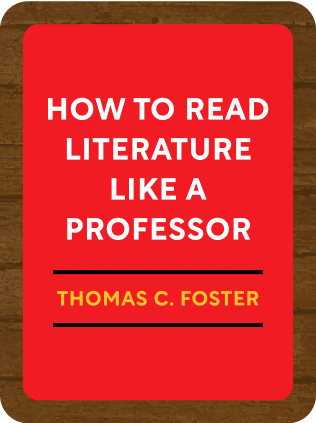

This article is an excerpt from the Shortform book guide to "How to Read Literature Like a Professor" by Thomas C. Foster. Shortform has the world's best summaries and analyses of books you should be reading.
Like this article? Sign up for a free trial here .
What do illnesses symbolize in literature? Why is it more common to write about some diseases and not others? What does it mean when a character is physically disabled?
When writing literature, authors choose which illnesses to give their characters very carefully. Some illnesses are picturesque, some are mysterious, some are powerful metaphors, and some have significant origins.
Keep reading to learn more about illness in literature.
Symbolism of Illness in Literature
When reading a novel, take note of any illnesses given to the characters. The author has chosen to give the character an illness for a particular purpose, and often the kind of illness in literature is a good indicator as to what that purpose is.
Most authors are interested in exploring the humanity of their characters, and a physical illness can be a telling symbol to signify a character’s internal shortcomings.
Literary Diseases
Here are the principles that govern the use of symbolic disease in literature:
- Some diseases are less useful than others.
- Example: Syphilis was a common disease in the late nineteenth century, but it didn’t show up in many works of literature because of its negative connotations. Victorian sensibilities did not allow for the use of disease with such taboo origins.
- The disease should be picturesque.
- Even though consumption, or tuberculosis, was a terrible illness, it was a common choice among authors because of its presentation. The sufferer becomes pale with dark eye sockets, the way a martyr would be painted in medieval times.
- The disease should be mysterious.
- In the Victorian age of literature, diseases like consumption could spread through whole families without anyone knowing how it was passed on. This gave illness and disease a mysterious appeal for authors. Syphilis, on the other hand, had origins that were all too clear—another reason it was avoided.
- The disease should have strong possibilities for metaphor.
- Some diseases have associations that are ripe with possibility for symbolism. For example, tuberculosis was known as a wasting disease, discussed below.
The most commonly employed diseases in literature are:
- Heart disease: Symbolic of heartbreak, loneliness, regret, infidelity, and other emotional turmoil.
- Example: In Nathaniel Hawthorne’s “The Man of Adamant,” the protagonist moves to a cave in order to avoid contact with people. In the cave, calcium-filled water slowly leaks into his body. Over the years, the calcium slowly turns his heart to stone. The character who had a metaphorical heart of stone at the beginning of the story has a literal heart of stone by the end.
- Tuberculosis: Symbolic of wasting away, sensitivity, or delicate nature.
- Example: Henry James employs tuberculosis in both The Portrait of a Lady and The Wings of the Dove.
- Plague: Symbolic of widespread devastation, societal dissolution, or divine wrath.
- Example: In Albert Camus’ The Plague, Camus uses the plague as a device to illustrate the uncertainty of the time, the randomness of nature, and the desire to act even once it’s too late.
- An unnamed fever: Symbolic of whatever the author wants it to be.
- Many authors would use a generic fever as a plot solution, to get rid of a character or create drama. However, authors also used generic fevers symbolically because fevers weren’t restricted by the reader’s associations of a particular disease.
Modern Example: AIDS
Every age has a disease that captures the imagination and fear of readers and authors alike. The most recent example is HIV/AIDS. But why? Let’s go back to the principles of an effective literary disease:
- Visible signs: Like tuberculosis, those suffering from AIDS often waste away rather dramatically.
- Mysterious: We know how AIDS spreads, but we are mystified by how to cure it.
- Opportunities for metaphor: Plenty—listed below.
Qualities of HIV/AIDS that lend themselves to metaphor:
- AIDS is known to lie dormant before ever showing symptoms. Victims could be unknown carriers for years.
- The disease has a high mortality rate.
- AIDS affects particular demographics more frequently—such as young people, the gay community, developing nations, and artists.
- The political associations: Some religious and political conservatives looked at AIDS as a kind of divine retribution for those who live a particular lifestyle. On the other hand, AIDS activists criticized the government for not helping the communities affected most drastically by the disease.
Literary Example: The Hours
Michael Cunningham’s The Hours is a modern reinterpretation of Virginia Woolf’s Mrs. Dalloway. In Woolf’s original work, a shell-shocked military veteran commits suicide as a response to Post-Traumatic Stress Disorder, a widely-discussed disease at the time.
In his adaptation, Cunningham chose to use a disease that was more relevant to the time and place of his own novel, the modern urban environment. Instead of PTSD and suicide, Cunningham’s character has advanced AIDS.
The two characters’ deaths have a lot of similarities, even though their diseases are quite different. By using the model of Woolf’s work, Cunningham implies that suffering and despair are timeless issues of humanity.
Scars and Disabilities
Along with illness in literature, you should see physical imperfections in literature in symbolic terms to classify a character as different. When you read of a character with a physical marking or handicap in a novel, know that the author means to call attention to the nature of the character or a thematic concern of the novel.
In Elizabethan literature, physical deformity was equated with moral or spiritual depravity. As politically incorrect as it might seem now, a character with a handicap was a sign of God’s displeasure in an Elizabethan novel.
- Example: Shakespeare’s Richard III had scoliosis, an external symbol of his morally twisted ways.
Things have changed in modern literature. Not all physical maladies should be read as a representation of moral shortcomings. Instead, you should see physical markings as:
- Indication of the damage the character has endured in life
- Example: In Toni Morrison’s Beloved, Sethe’s back is covered in a network of scars from being whipped in slavery. The scars on her back are a visual representation of the terrors she has been through.
- Differentiation or identification of character
- In Sophocles’ Oedipus Rex, the audience knows that Oedipus has wounded feet from being bound as a baby. In the play, Oedipus is ignorant of his own identity, but his scars differentiate him to the audience right away. It is not until much later that the scars help him prove his identity within the play’s narrative.
- Physical representations of a theme
- In Ernest Hemingway’s The Sun Also Rises, the character Jake Barnes has a physical mutilation from the war. Although it is never described directly, the reader comes to find out that he has lost his genitals. Hemingway uses Jake’s injury to symbolize the destruction of war—the destruction of life and reproductive possibility.

———End of Preview———
Like what you just read? Read the rest of the world's best book summary and analysis of Thomas C. Foster's "How to Read Literature Like a Professor" at Shortform .
Here's what you'll find in our full How to Read Literature Like a Professor summary :
- How to get more out of the novels that you read
- Why you should focus on memory, symbols, and patterns to understand literature better
- Why sex scenes aren't always about sex






